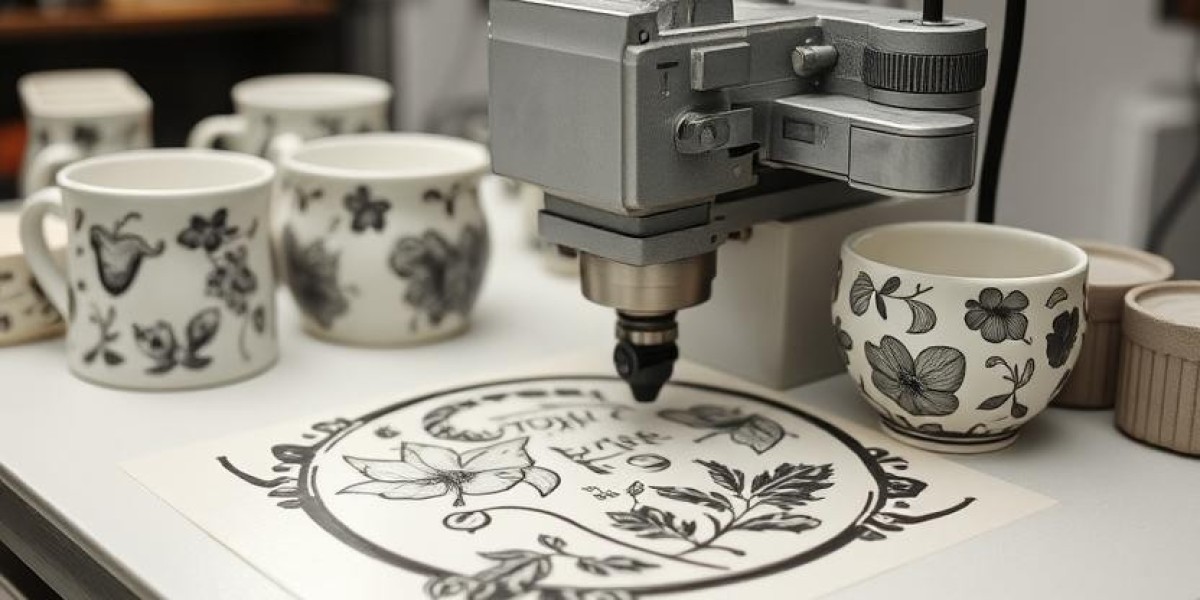Ceramic art has always been a timeless medium that bridges functionality and expression. In today’s world, this tradition continues to thrive, but with a modern twist—ceramic printing. This technique allows artists and creators to produce vivid, detailed images on ceramic surfaces using digital processes. As creativity intersects with technology, ceramic printing is helping to reshape the boundaries of visual art, design, and craftsmanship.
From small-scale workshops to modern galleries, ceramic printing is gaining prominence for its ability to convey both precision and personality. In the second paragraph, we explore how ceramic printing has opened new pathways for artists and designers, making it easier to personalize ceramics with high-quality imagery, storytelling elements, or cultural motifs.
A Historical Glimpse at Ceramic Decoration
Traditional Ceramic Techniques
Historically, ceramic surfaces were adorned with hand-painted designs, etched patterns, and glaze techniques. Cultures around the world developed distinct methods—from Chinese porcelain painting to Middle Eastern geometric tiles. These techniques, though beautiful, were time-consuming and often reserved for high-value pieces.
Transition to Digital Precision
The arrival of ceramic printing marked a turning point. What once required hours of labor could now be executed quickly without sacrificing artistic detail. By incorporating digital images into the ceramic-making process, creators gained the ability to replicate fine artwork across multiple pieces with consistency and durability.
The Technical Side of Ceramic Printing
Understanding the Process
Ceramic printing uses ceramic inks composed of fine, colored mineral particles. These inks are applied via digital printers or screen printing methods. After application, the ceramic piece is fired in a kiln to fuse the image with the surface glaze. The result is a vibrant, permanent print that resists heat, moisture, and wear.
There are three main types of ceramic printing:
Digital inkjet ceramic printing: Best for high-resolution images and custom artwork.
Silkscreen printing: Ideal for repetitive patterns and mass production.
Sublimation transfer: Popular for curved items like mugs and vases.
Key Materials and Considerations
Successful ceramic printing depends on selecting the right ceramic base, glaze type, and image resolution. Smooth, glazed tiles and white ceramics offer the best contrast and clarity. Designers must also account for color shifts during the firing process, often doing test runs before full production.
Artistic Applications of Ceramic Printing
Custom Art Tiles
One of the most popular applications is the creation of printed art tiles. Artists can transfer paintings, drawings, or digital artwork onto ceramic tiles that serve as wall décor, installations, or framed pieces. This allows for both gallery-quality art and accessible, reproducible merchandise.
Storytelling Through Ceramics
Artists are also using ceramic printing to tell personal or cultural stories. Family photographs, historical events, or abstract concepts can be embedded into ceramic panels. These works often become permanent displays in museums, public buildings, or private collections.
Functional Art Objects
Functional items such as plates, bowls, coasters, and planters are transformed into art pieces through ceramic printing. Creators blend visual appeal with utility, producing collections that are equally at home on display or in daily use.
Ceramic Printing for Designers and Makers
Empowering Independent Creators
Ceramic printing has empowered a generation of designers and makers who don’t have access to traditional ceramic studios. With digital tools and small-scale printing services, artists can experiment without the burden of manual labor or large production facilities.
Expanding Product Lines
Designers use ceramic printing to diversify their offerings—from interior design elements to branded gifts. It's especially useful for those who sell on platforms like Etsy or through independent shops, where unique and customized pieces attract attention.
Collaboration and Licensing
Artists often collaborate with ceramic manufacturers to license their designs. Ceramic printing makes it easy to produce limited-edition runs or seasonal collections, bridging the gap between fine art and commercial viability.
Educational and Community Benefits
Art Education and Engagement
Art schools and community programs are increasingly incorporating ceramic printing into their curriculum. Students learn about design, color theory, and production while gaining hands-on experience with digital tools and materials.
Community Murals and Installations
Community-driven projects often use ceramic printing to create murals, memorials, and educational displays. These printed tiles can feature local artwork, names of contributors, or themes that reflect shared values and histories.
Workshops and Skill-Building
Organizations now offer ceramic printing workshops that combine digital design training with hands-on ceramics. These experiences promote creativity, skill development, and even entrepreneurial opportunities for participants.
Advantages of Ceramic Printing in Art
Reproducibility
Artists can produce multiple versions of a design without redoing it by hand. This opens up opportunities for limited-edition sales or series work without sacrificing quality.
Creative Flexibility
Any image, photo, or graphic can become part of a ceramic piece. Artists aren’t limited by brush skills or glaze chemistry and can experiment freely with composition and color.
Long-Term Preservation
Unlike paper or canvas prints, ceramic prints resist moisture, UV light, and wear. This makes them ideal for public spaces, kitchens, bathrooms, and outdoor settings.
Looking Toward the Future
Integration with Digital Tools
Artists are now combining ceramic printing with tools like Adobe Illustrator, Procreate, and even AI-generated imagery. This widens the creative pool and enables experimentation with new aesthetics and visual narratives.
Eco-Friendly Innovations
New developments in water-based ceramic inks and energy-efficient kilns are making the ceramic printing process more sustainable. This aligns with the growing demand for environmentally responsible art production.
Hybrid Artistic Practices
Ceramic printing is increasingly part of mixed-media installations that include wood, glass, or metal. This versatility allows for innovative, layered artworks that push beyond traditional boundaries.
Conclusion
Ceramic printing has redefined what it means to create, decorate, and share ceramic art. By merging the ancient appeal of ceramics with the precision and potential of digital printing, this technique has empowered a new generation of artists, educators, and designers to express themselves in ways that are both personal and impactful.
As artists explore this medium for storytelling, design, and function, ceramic printing continues to grow in popularity across artistic and commercial fields. Whether used in a classroom, gallery, or workshop, ceramic printing is shaping the future of contemporary art and craft with every fired tile and printed plate.







